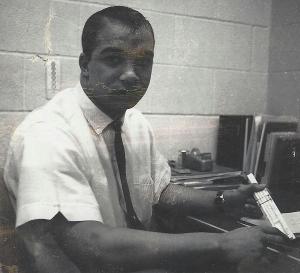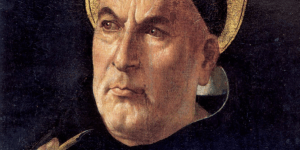At Fenwick, six top-level administrators also (still) teach. Here’s why.
By Mark Vruno
What sets Fenwick apart from other high schools in the Chicago area and surrounding suburbs? Four differentiating aspects of the school come to mind:
-
The seven Dominican priests and brothers present daily in the building is one major distinction.
-
There also are eight PhD-degreed leaders among the Friars’ faculty and administration.
-
Another impressive statistic is that more than one-quarter of the teachers working at Fenwick also are alumni.
-
And yet another differentiator that makes Fenwick special is that six administrators also teach courses to students.
This last point of differentiation is akin to the difference at universities and colleges where actual professors teach under-graduate classes (as opposed to those taught by teaching assistants enrolled in graduate school). The six Fenwick administrators in the classroom are (from left in the above photo):
- Director of Scheduling & Student Data Mickey Collins ’03 – Accelerated Anatomy
- Assistant Principal Laura Pendleton – Orchestra Director
- Principal Peter Groom – Foreign Policy (History)
- President Fr. Richard Peddicord, O.P., PhD – Dominican Spirituality (Theology)
- Assistant Principal Eleanor Comiskey ’06 – Algebra
- Student Services/Enrollment Director James Quaid, PhD – Advanced Placement U.S. History

Every weekday afternoon for 45 minutes, you won’t find Fenwick President Fr. Richard Peddicord, O.P. in his office or on the phone. Instead, he’s in a classroom teaching Theology (Dominican Spiritualty) to senior students. Principal Peter Groom, who teaches History (Foreign Policy), has said that teaching and interacting with students in the classroom is the highlight of his work day. What is it that they enjoy about the teaching portion of their day-to-day responsibilities?

“Teaching is a way for me to be connected to the students on a personal level,” explains alumnus Michael “Mickey” Collins ’03, who teaches a science course in Accelerated Anatomy when he’s not overseeing the scheduling and data of Fenwick students. “I spend most of my time seeing names, test scores, course requests and schedules of students, but not as much face-to-face [time] with those students,” Mr. Collins adds.
“I think the fact that our administrators still teach keeps them more connected than most administrators at other schools.” – Assistant Principal/Orchestra Director Laura Pendleton
Assistant Principal Laura Pendleton notes, “The unique thing about being an education administrator is that none of us chose this profession. We all chose to be teachers first and then ended up in administration for a variety of reasons and circumstances. To be able to work in administration and continue to teach, which was my first passion, is a gift,” says Ms. Pendleton, who also is Fenwick’s Orchestra Director. “It takes you back to your early career, and I enjoy having the time working with the students vs. the adults. They keep you close to the pulse of the school.”
Why They Teach
“I think the fact that our administrators still teach keeps them more connected than most administrators at other schools,” Pendleton continues. “Also, most days teaching my class is a stress reliever!

“It is important for school leaders to stay connected with the student body because,” she says, “first and foremost, we are here for them. I can imagine that if you are not in front of students every day you might start to get a little disconnected. Teaching my own class is very beneficial for me when supervising teachers. Being in their classroom becomes more than just an isolated event and more of a collaboration: I’m also in a classroom with these students every day; I have the same issues. It gives us a very up-to-date understanding of what our teachers are going through. We have a unique student body here at Fenwick, and it’s important to know their needs specifically.”
Dr. James Quaid, former Fenwick Principal and current Director of Student Services & Enrollment, returned to Fenwick this school year. “I began my career as a teacher and always loved working with students as a teacher, coach and/or moderator,” Dr. Quaid shares. “Administrative work involves planning and finding ways to help students, teachers and parents/guardians. It also involves a lot of reaction to issues in which people are frustrated or upset. When I am in a classroom, I get to work in a very positive environment and enjoy watching students learn and grow. If you plan, communicate and react properly, there really are not that many negative things that happen. For one period each day I can just enjoy the experience.”









 Although it is the better part of a decade that we have been without Anne, I see her everywhere in my life. On one of my running routes, there is a black and white portrait of her (top and at left) along the train tracks. At
Although it is the better part of a decade that we have been without Anne, I see her everywhere in my life. On one of my running routes, there is a black and white portrait of her (top and at left) along the train tracks. At 
 Who is God? Much of theology at Fenwick revolves around this question. Who is the God of Abraham, the God of Moses, the God-man Jesus? What does it mean to interact with this God? They are big questions, and the answers have significant impact on our lives of faith. It makes a big difference if we think that:
Who is God? Much of theology at Fenwick revolves around this question. Who is the God of Abraham, the God of Moses, the God-man Jesus? What does it mean to interact with this God? They are big questions, and the answers have significant impact on our lives of faith. It makes a big difference if we think that:





 Today, Matuszewski serves the community in several ways. His pro-bono activities include work for the
Today, Matuszewski serves the community in several ways. His pro-bono activities include work for the 
 School records dating back 64 years confirm that alumnus Richard Cochrane ’59 blazed a trail as Fenwick’s very first African-American student and graduate. Originally from Maywood, IL, Mr. Cochrane now lives in the sunny Southwest. In high school, he was active in student government (class treasurer and secretary) and played football and basketball (captain).
School records dating back 64 years confirm that alumnus Richard Cochrane ’59 blazed a trail as Fenwick’s very first African-American student and graduate. Originally from Maywood, IL, Mr. Cochrane now lives in the sunny Southwest. In high school, he was active in student government (class treasurer and secretary) and played football and basketball (captain).









 Who was Art Dalton? According to the ’42 Blackfriars yearbook, he was a member of St. Eulalia Parish in Maywood, IL. A versatile student-athlete in high school, Art participated in basketball, boxing and track for three of his four years at Fenwick; he played tennis (doubles) as a junior and senior and tried football and track as a freshman. He also wrote for The Wick student newspaper as a junior and was a member of the Pan-American Club as a senior.
Who was Art Dalton? According to the ’42 Blackfriars yearbook, he was a member of St. Eulalia Parish in Maywood, IL. A versatile student-athlete in high school, Art participated in basketball, boxing and track for three of his four years at Fenwick; he played tennis (doubles) as a junior and senior and tried football and track as a freshman. He also wrote for The Wick student newspaper as a junior and was a member of the Pan-American Club as a senior.


 *
*